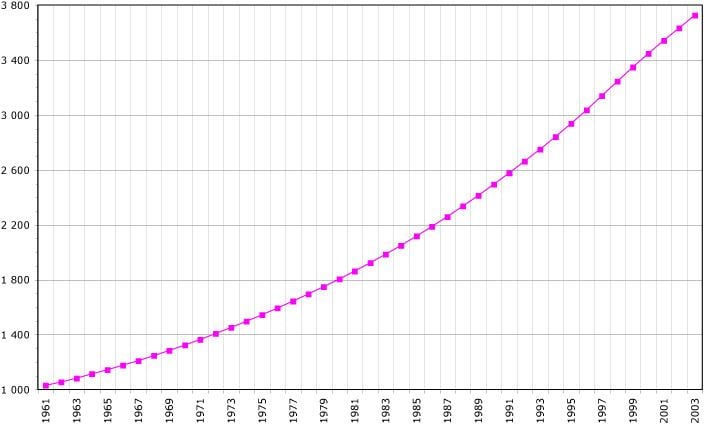 | ||
This article is about the demographic features of the population of the Republic of the Congo, including population density, ethnicity, education level, health of the populace, economic status, religious affiliations and other aspects of the population.
Contents
- Map of Democratic Republic of the Congo
- Population
- Vital statistics
- Fertility and Births
- Ethnic groups
- Languages
- Religion
- Health
- Education
- References
Map of Democratic Republic of the Congo
The Republic of the Congo's sparse population is concentrated in the southwestern portion of the country, leaving the vast areas of tropical jungle in the north virtually uninhabited. Thus, Congo is one of the most urbanized countries in Africa, with 85% of its total population living in a few urban areas, namely in Brazzaville, Pointe-Noire, or one of the small cities or villages lining the 534-kilometre (332 mi) railway which connects the two cities. In rural areas, industrial and commercial activity has declined rapidly in recent years, leaving rural economies dependent on the government for support and subsistence. Before the 1997 war, about 15,000 Europeans and other non-Africans lived in Congo, most of whom were French. Presently, only about 9,500 remain. Pygmies make up 2% of Congo's population.
Population
According to the 2010 revision of the World Population Prospects the total population was 4 043 000 in 2010, compared to only 808 000 in 1950. The proportion of children below the age of 15 in 2010 was 40.6%, 55.7% was between 15 and 65 years of age, while 3.7% was 65 years or older .
Vital statistics
Registration of vital events in the Republic of the Congo is incomplete. The Population Departement of the United Nations prepared the following estimates.
Fertility and Births
Total Fertility Rate (TFR) (Wanted Fertility Rate) and Crude Birth Rate (CBR):
Fertility data as of 2011-2012 (DHS Program):
Ethnic groups
Kongo 48%, Sangha 20%, M'Bochi 12%, Teke 17%, Europeans and other 3%Languages
French (official), Lingala and Monokutuba (lingua franca trade languages), many local languages and dialects (of which Kikongo is the most widespread)The majority of the population is concentrated along the railroad between Pointe-Noire and Brazzaville in the south where Kituba (a creole language based on Kikongo) is the primary language. Lingala is influential in the sparsely inhabited northern half of the country.Religion
Roman Catholic 33.1%, Awakening Churches/Christian Revival 22.3%, Protestant 19.9%, Salutiste 2.2%, Islam 1.6%, Kimbanguiste 1.5%, Other 8.1%, None 11.3% (2010 est.)Health
Life expectancy for the population was estimated at 54.91 years in 2011: 53.62 for males and 56.25 for females. The adult prevalence rate for HIV/AIDS was 3.4% as of 2009, representing 77,000 people living with the disease and 5,100 deaths. The Republic of Congo is considered to have a high degree of risk of infectious diseases, particularly bacterial diarrhea, hepatitis A and typhoid fever (all food- or waterborne), and malaria (vectorborne).
Education
As of 2003, 83.8% of the adult population was considered literate, consisting 89.3% of males and 78.4% of females.
